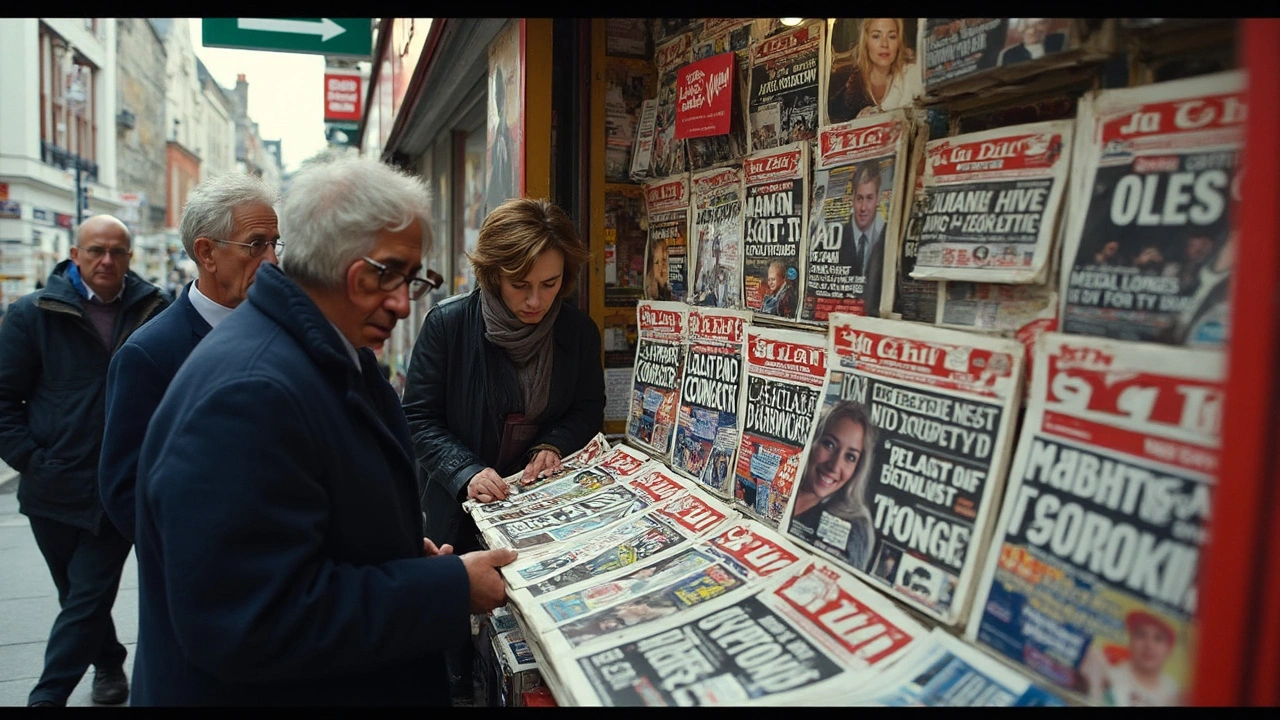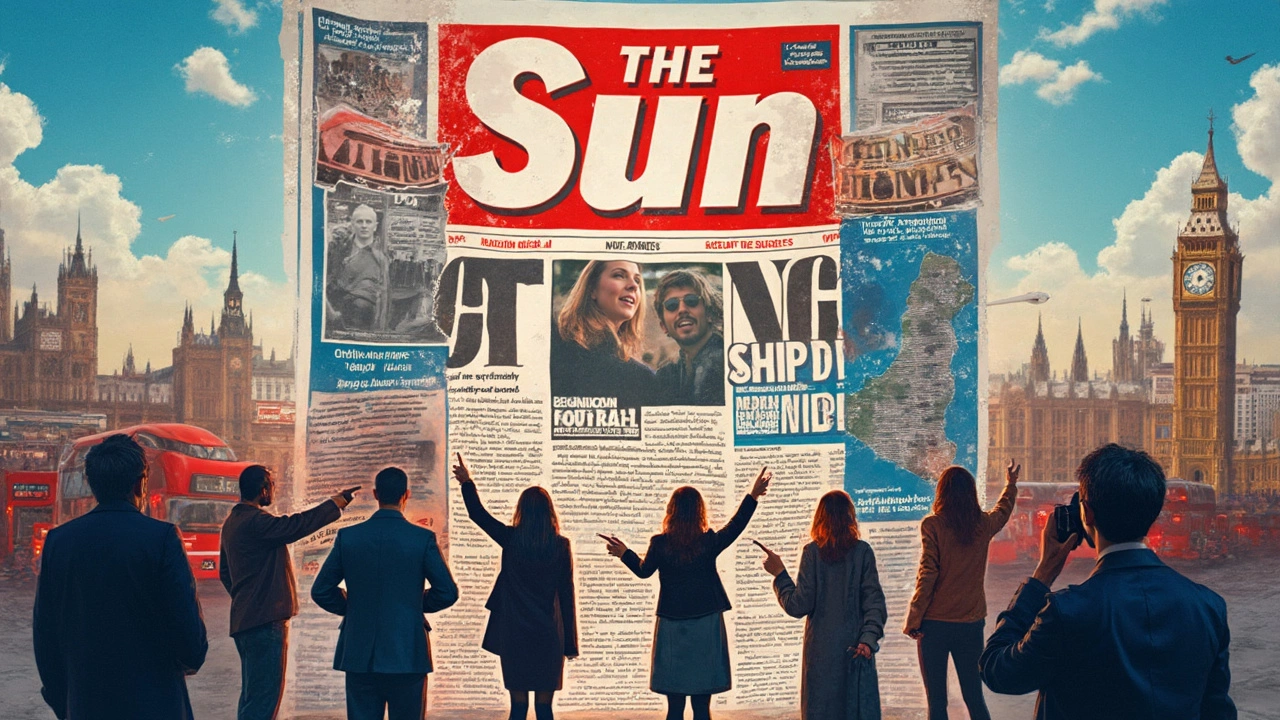
If you’ve ever picked up a copy of the Sun, you’ve probably wondered: is it pushing a political agenda, and if so, which way? This isn’t just a question for media nerds—anyone wanting to make sense of UK politics bumps into the Sun’s front-page shouting sooner or later.
Here’s a fact that’s stuck with tons of British voters: the Sun famously claimed, “It’s the Sun Wot Won It” after the 1992 general election, taking credit for swinging the vote. That statement alone tells you how serious its influence is seen. But was that influence leaning left or right?
Short answer: the Sun has long backed the Conservatives, especially when it matters most—general elections. Throughout the 1980s and 90s, it was pretty openly pro-Tory. But it hasn’t always been 100% loyal. Briefly in the 90s, it threw support behind Tony Blair’s New Labour, but quickly returned to old habits once the political winds shifted. If you’re trying to figure out if the tone feels more like a Labour rally or a Conservative fundraiser, the evidence usually tips rightward.
- The Sun’s Political Track Record
- Big Headlines, Bigger Influence
- Who Really Decides: Editors or Owners?
- How to Spot Bias in Any Paper
The Sun’s Political Track Record
The Sun isn’t shy about picking sides when election time comes around. If you trace its covers and headlines over the years, most of the time it lands clearly on the right. In the Margaret Thatcher years, the Sun was practically her megaphone. During the 1983 election, its front page ran “Vote Tory This Time”—no guessing games there. Fast-forward to 1992, the infamous front page showing Labour’s Neil Kinnock inside a lightbulb with the line, “If Kinnock wins today will the last person to leave Britain please turn out the lights.” Brutal, memorable, and completely in the Conservative camp.
Here’s the twist: the Sun isn’t 100% predictable. In 1997, it switched to Labour and threw support behind Tony Blair. Blair’s New Labour borrowed a lot of Thatcherite policies to make itself more business-friendly, which seemed to pass the Sun’s test. But just twelve years later, it swapped back. On the eve of the 2009 Labour conference, the Sun’s front page screamed, “Labour’s lost it.” Another clear signal.
Wondering how often the Sun has switched? Not much. Here’s a basic rundown since 1979:
| Election Year | Party Backed |
|---|---|
| 1979 | Conservative |
| 1983 | Conservative |
| 1987 | Conservative |
| 1992 | Conservative |
| 1997 | Labour |
| 2001 | Labour |
| 2005 | Labour |
| 2010 | Conservative |
| 2015 | Conservative |
| 2017 | Conservative |
| 2019 | Conservative |
So, of eleven general elections since 1979, the Sun only went left three times, all when Blair was at Labour’s helm. The rest? A big thumbs-up for the Conservatives.
If you’re looking for proof of the Sun being right-wing, the record’s pretty clear. But it’s also clever about backing winners—usually picking the side most likely to take power. So when you’re reading its headlines, remember: it’s not just reporting, it’s aiming to be on the winning team.
Big Headlines, Bigger Influence
The Sun isn’t just shouting in the void; its splashy headlines make ripples—sometimes full-on waves—in UK politics. If you look at the last few decades, you’ll notice the paper loves to make bold claims that land everywhere, from social media feeds to actual conversations at the pub.
One headline sticks in everyone’s minds: right before the 1992 election, the Sun’s front page ran 3If Kinnock wins today will the last person to leave Britain please turn out the lights d. A day later, Labour lost. The Sun then patted itself on the back with cIt fs the Sun Wot Won It. d That pretty much sums up how the paper sees its role.
It’s not just bravado. Research from the Reuters Institute showed that, during the 2019 general election, the Sun was the most read print newspaper for voters backing the Conservatives. Social media gives its big headlines a second life, getting more eyeballs beyond just the print crowd.
“There can be little doubt about the paper’s continuing influence with working-class readers—especially in key swing areas,” said media professor Roy Greenslade in the Guardian.
Here’s a quick look at how the the Sun's election headlines lined up with election results:
| Year | Sun Headline | Party Supported | Winning Party |
|---|---|---|---|
| 1992 | If Kinnock wins today... | Conservatives | Conservatives |
| 1997 | The Sun Backs Blair | Labour | Labour |
| 2010 | The Sun Switches to Back Tories | Conservatives | Conservatives |
| 2019 | Boris's Big Win | Conservatives | Conservatives |
Noticed the pattern? When the Sun gets loud and clear about who it likes, the ball tends to bounce that way. Of course, plenty of folks say it’s not just the paper, but it definitely gives its pick a major nudge.
If you’re trying to figure out who’s likely to come out on top, keeping an eye on the Sun’s front page is a decent shortcut. Just remember, those headlines are there to steer you, not just inform you.

Who Really Decides: Editors or Owners?
If you’re trying to figure out who actually steers the the Sun’s political ship, you have to look inside the newsroom—and even higher up the food chain. People love to argue about whether editors call the shots, or if the real power sits with the owner.
The Sun is owned by News UK, which is in turn part of Rupert Murdoch’s global media empire (yes, that Rupert Murdoch). Some insiders say editors have day-to-day control, but there’s loads of evidence the owner’s vibe leaks into coverage. For example, in 2016, ex-Sun editor David Yelland straight up admitted that Murdoch’s voice “always gets heard” at election time. It’s not just rumours—Murdoch himself has joked that politicians are always ringing him up before big elections, knowing his papers can sway votes.
Editors do get to shape headlines, tone, and coverage details, but big political calls often match up with what Murdoch prefers. This makes sense in practice: if your boss owns the paper and wants a certain line, you’re going to give it to him, or you’ll be looking for a new job. Back in 2010, when the Sun switched support back to the Tories after years of backing Labour, the decision lined up perfectly with signals sent out by Murdoch’s other papers and his public statements.
Here’s a simple breakdown of the key people calling the shots in the Sun’s recent history:
| Year | Owner | Editor | Election Stance |
|---|---|---|---|
| 1981-1992 | Rupert Murdoch | Kelvin MacKenzie | Conservatives |
| 1997 | Rupert Murdoch | Stuart Higgins | Labour |
| 2010 | Rupert Murdoch | Rebekah Brooks | Conservatives |
| 2019 | Rupert Murdoch | Tony Gallagher | Conservatives |
Notice a pattern? The owner stays the same and so does the general political direction, with only small flips. This isn’t a fluke. So, if you want to know why the Sun might suddenly back a certain party or push a certain headline, look beyond the front page—the owner’s office has huge sway.
If you’re reading the Sun (or honestly, any big paper), check out these simple tips:
- Watch for dramatic switches in party support, especially before elections—are they lining up with the owner’s views?
- Look for stories that get a lot of space or repeated headlines and see if they back up the owner’s business or political interests.
- If there’s a big political endorsement, dig into who owns the paper and what their track record is.
How to Spot Bias in Any Paper
Ever wondered if your daily news is spinning a story or just serving facts? Spotting bias is easier when you know what to look for. This advice works not just for the Sun but for any UK paper.
The main thing is to watch out for loaded language. If a headline screams things like "disaster," "chaos," or "betrayal," chances are they're trying to push you emotionally. The Sun's front pages have a habit of doing this, especially when it's about politics or big social issues. In 2016, during the Brexit campaign, the paper used headlines like "BeLEAVE in Britain"—cheeky wordplay, but clearly not neutral.
Another clue? Who gets quoted and how. If a paper keeps quoting just politicians from one party, or only experts who agree with that angle, it's probably not showing the full picture. The Sun often runs interviews with Conservative MPs when pushing a Tory point, or highlights Labour 'blunders' with lots of unnamed 'sources.'
Here’s a handy checklist for sniffing out bias in any newspaper:
- Check the language: Are the words emotionally charged?
- Look at the sources: Is it balanced? Are multiple sides quoted?
- Spot the missing info: Sometimes it’s what’s left out that tells you the most.
- Consider the images: Do pictures match the text, or are they used to sway opinion?
- Watch the endorsements: Around election time, which parties get big support?
Still not sure? Compare different papers on the same story. If the Sun says one thing and the Guardian says something totally different, somewhere in between is likely closer to the truth.
Here’s some data from research done by YouGov and the Press Gazette on how UK newspapers lean politically, ranked from left to right:
| Paper | Lean | Most Recent Support (2024) |
|---|---|---|
| Guardian | Left | Labour |
| Independent | Centre-left | Labour/Lib Dem |
| Daily Mirror | Left | Labour |
| The Sun | Right | Conservative (mainly) |
| Daily Telegraph | Right | Conservative |
| Daily Mail | Right | Conservative |
Knowing these leanings helps when you’re trying to work out if what you’re reading is solid info—or just a paper cheering for its own team. Making a habit of checking facts and comparing headlines goes a long way. The more you look for these clues, the harder it is for any tabloid to pull the wool over your eyes.